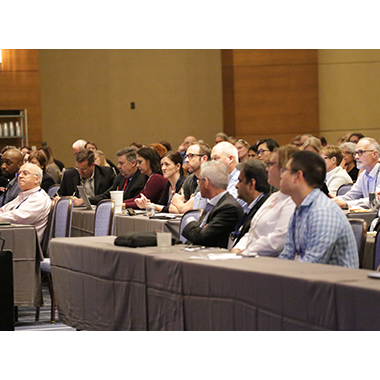With food safety as a top priority for your business, keeping all pests out should also be top of mind. Stored product pests are tiny insects that can quickly damage your products and lead to lost profits. Glen Ramsey, board-certified entomologist and Director of Technical Services for Orkin, explains how facilities can keep stored product pests out of their facilities and why quick action is essential to successfully managing these pests if your facility confirms an infestation.
What are stored product pests?
Ramsey: Stored product pests are small insects, commonly beetles and moths, that feed on the ingredients in food manufacturing and handling facilities. These pests mainly target dry foods such as grains, cereals, seeds, chocolate and fruit. Depending on their feeding habits, they are categorized as external feeders, internal feeders, secondary feeders or scavengers.
Why are they harmful in food-handling facilities?
Ramsey: While they don’t cause structural damage or spread diseases, stored product pests can cause significant damage to stored goods resulting in lost product and lost profits for your business. These pests breed rapidly, so it’s important to look for signs of their activity and act quickly if you notice their presence. In addition to damaging your ingredients, many stored product pests can produce chemicals that alter the taste of food, and some of their larvae can irritate the digestive tract or even cause allergic reactions in vulnerable people.
What prevention methods can I implement to help avoid this pest issue?
Ramsey: Managing stored product pests takes a comprehensive strategy, which is where Integrated Pest Management (IPM) comes into play. Instead of relying on chemical treatments, IPM focuses on a proactive cycle of inspection, sanitation and monitoring tactics. Here are a few ways you can be proactive in helping to prevent stored product pest problems in your facility between pest control visits:
Storage
- Store ingredients off the floor and at least 18 inches away from walls to allow access for staff to inspect and clean the area.
- As a precaution, remove any products that are damaged or found in poor condition.
- Try to maintain storage rooms at 55 degrees Fahrenheit or lower; stored product pests are generally inactive at these lower temperatures.
Sanitation
- Use a vacuum with a high-efficiency particulate air (HEPA) filter to remove debris from cracks and crevices.
- Immediately clean up any product spills and encourage employees to do the same.
- If you haven’t yet, start a continuous deep-cleaning program to ensure that every shelf is inspected, vacuumed and wiped down at least twice per year.
Ingredient Care
- Inspect incoming shipments for signs of pests, such as webbing, larvae and live adult insects. Pay close attention if your packaging material has been damaged, as this can alert to product infestations.
- If any suspicion of activity is seen, even only on the surface of the product, use a grain probe or similar instrument to inspect and determine the extent of the infestation.
- Quarantine known infested product away from clean product.
- Set aside a sample of every shipment in a closed, labeled plastic container. If insects appear over time, immediately quarantine and inspect any remaining product and notify your supplier.
- Rotate ingredients on a first-in, first-out basis to help prevent them from deteriorating and inviting scavengers and secondary feeders.
When it comes to monitoring and managing stored product pests in your facility, you should work with a pest management provider. Make sure the provider you select is reliable and knowledgeable about the food and beverage processing industry.
About the Expert:
Glen Ramsey, MS, BCE
Director of Technical Services, Orkin, LLC
Glen Ramsey is Director of Technical Services for Orkin. He is a board-certified entomologist and provides technical support and guidance across all Rollins brands in the areas of training and education, operations, and marketing. For more information, email gramsey1@rollins.com or visit www.orkincommercial.com.






















